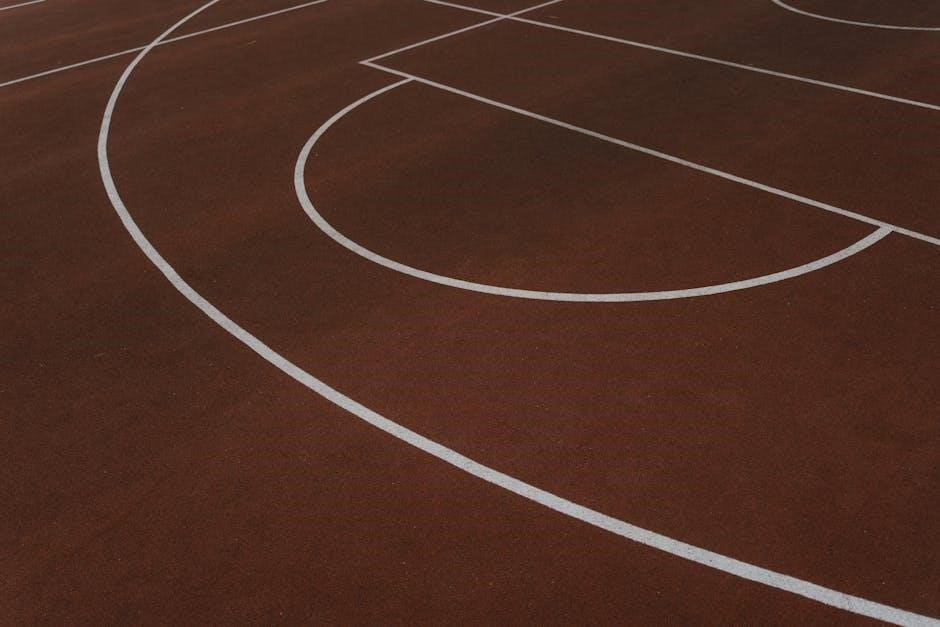Cam-A-Line Dowel Guide: A Comprehensive Overview
The Woodpeckers Cam-A-Line Dowel Guide elevates dowel joinery through precision and efficiency. It combines variable spacing, precision-engraved centerlines, a robust fence, and a versatile stop system. This innovative jig aligns, drills, and assembles perfect dowel joints effortlessly for diverse woodworking applications.

The Cam-A-Line Dowel Guide represents a significant advancement in dowel joinery, offering woodworkers unparalleled precision, versatility, and ease of use. Unlike traditional doweling methods or restrictive jigs, the Cam-A-Line empowers users with complete control over dowel placement and spacing, ensuring optimal joint strength and aesthetic appeal.
This comprehensive guide delves into the features, benefits, and applications of the Cam-A-Line Dowel Guide, providing a detailed overview of its capabilities and demonstrating how it can elevate your woodworking projects. We will explore its variable spacing, precision-engraved centerlines, robust fence system, and versatile stop system.
Whether you’re a seasoned professional or a passionate hobbyist, the Cam-A-Line offers a streamlined and efficient approach to creating strong, accurate, and visually pleasing dowel joints. Discover how this innovative tool can transform your woodworking and unlock new levels of precision and creativity in your projects. Join us as we explore the world of Cam-A-Line.

Key Features and Benefits
The Cam-A-Line Dowel Guide offers unmatched variable spacing, precision-engraved centerlines, a robust fence, and a versatile stop system. These features combine to deliver superior accuracy, flexibility, and efficiency, enhancing your woodworking projects with perfectly aligned and strong dowel joints.
Variable Spacing Capabilities
The Cam-A-Line Dowel Guide distinguishes itself with its exceptional variable spacing capabilities, setting it apart from conventional doweling jigs. Unlike those limited to fixed dimensions, the Cam-A-Line employs a sliding cam system to maintain even spacing between three drill guide bushings. This innovative design offers a spacing range from 3/4 inch (20 mm) to 1-3/4 inches (44 mm) center-to-center.
This versatility allows for evenly spaced three-dowel arrays on workpieces ranging from 2-1/4 inches wide. The ability to optimize dowel spacing and the number of dowels used is possible on workpieces up to 5-1/2 inches wide, providing enhanced control over joint strength and stability.
The variable spacing feature is particularly beneficial when working with different wood types or varying load requirements. By adjusting the dowel spacing, you can customize the joint to achieve the optimal balance of strength, aesthetics, and ease of assembly. This adaptability ensures that the Cam-A-Line Dowel Guide can handle a wide range of woodworking projects with precision and ease.
Precision-Engraved Centerlines
The Cam-A-Line Dowel Guide boasts precision-engraved centerlines, a crucial feature that ensures accurate alignment and consistent dowel placement. These centerlines are meticulously etched onto the jig’s surface, providing a clear and reliable reference point for aligning the jig with your workpiece. This level of precision is essential for creating strong and aesthetically pleasing dowel joints.
The engraved centerlines eliminate guesswork and minimize the potential for errors during the drilling process. By aligning the centerlines with the layout lines on your workpiece, you can confidently drill precisely positioned dowel holes every time. This accuracy is especially important when working on complex projects or when joining multiple pieces of wood together.
Furthermore, the precision-engraved centerlines contribute to the overall ease of use of the Cam-A-Line Dowel Guide. The clear and visible markings simplify the alignment process, reducing the time and effort required to set up and execute dowel joints. Whether you’re a seasoned woodworker or a beginner, you’ll appreciate the added precision and convenience that these centerlines provide.
Robust Fence System
The Cam-A-Line Dowel Guide features a robust fence system designed to provide exceptional stability and support during the drilling process. This fence system is constructed from high-quality materials, ensuring durability and resistance to wear and tear. The robust design minimizes movement and vibration, resulting in cleaner, more accurate dowel holes.

The fence system is easily adjustable, allowing you to position the jig precisely on your workpiece. This adjustability is essential for achieving consistent dowel placement, especially when working on large or irregularly shaped pieces. The fence securely clamps to the workpiece, preventing slippage and ensuring that the jig remains firmly in place throughout the drilling operation.

Furthermore, the robust fence system enhances the overall safety of the Cam-A-Line Dowel Guide. By providing a stable platform for drilling, it reduces the risk of the jig shifting or moving unexpectedly. This added stability allows you to focus on the drilling process with confidence, knowing that your workpiece is securely supported. The robust fence system is a key component of the Cam-A-Line Dowel Guide, contributing to its accuracy, stability, and ease of use.
Versatile Stop System
The Cam-A-Line Dowel Guide incorporates a versatile stop system that significantly enhances its functionality and precision. This stop system allows for repeatable and accurate placement of dowel holes, making it ideal for projects requiring consistent spacing and alignment. The stops are easily adjustable, enabling you to customize the dowel spacing to suit your specific needs.
The versatility of the stop system lies in its ability to accommodate various workpiece sizes and shapes. Whether you are working on small, intricate pieces or larger, more complex assemblies, the stops can be quickly and easily repositioned to ensure accurate dowel placement. This adaptability makes the Cam-A-Line Dowel Guide suitable for a wide range of woodworking applications.
The stop system also contributes to the overall efficiency of the doweling process. By providing a clear and consistent reference point, it eliminates the need for guesswork and reduces the likelihood of errors. This results in faster assembly times and a higher quality finished product. The versatile stop system is an integral part of the Cam-A-Line Dowel Guide, providing precision, adaptability, and efficiency to your woodworking projects.

Applications of the Cam-A-Line Dowel Guide
The Cam-A-Line excels in creating strong, accurate joints. It is perfect for butt, edge, T-, and miter joints. This versatile tool ensures precise alignment and consistent dowel placement, enhancing the quality and durability of woodworking projects, regardless of joint type.
Butt Joints
Butt joints, while simple, often require reinforcement for optimal strength, making them ideal candidates for dowel joinery using the Cam-A-Line Dowel Guide. This guide ensures accurate alignment of dowel holes, which significantly strengthens the joint. By using the Cam-A-Line, woodworkers can achieve a flush, stable connection between two pieces of wood.
The variable spacing capabilities of the Cam-A-Line allow for customized dowel arrangements, optimizing the joint’s holding power based on the wood type and project demands. Precision-engraved centerlines guarantee consistent dowel placement, minimizing errors and ensuring professional results. The robust fence system further enhances accuracy by providing a stable reference surface.
Whether building cabinets, frames, or boxes, the Cam-A-Line Dowel Guide transforms basic butt joints into reliable, long-lasting connections. The ability to easily customize dowel spacing and maintain precise alignment makes this tool invaluable for any woodworking enthusiast or professional seeking superior joint strength.
Edge Joints
Edge joints, commonly used to create wider panels from narrower boards, benefit significantly from the precision and versatility offered by the Cam-A-Line Dowel Guide. Dowels provide essential alignment and reinforcement, preventing warping and ensuring a seamless, durable bond between boards. The Cam-A-Line facilitates the creation of perfectly aligned dowel holes along the edges of the boards, resulting in a professional-quality edge joint.
The variable spacing feature of the Cam-A-Line is particularly useful for edge joints, allowing woodworkers to optimize dowel placement based on board thickness and desired strength. Precision-engraved centerlines guarantee consistent dowel alignment, minimizing any visible gaps or imperfections along the joint line. The robust fence system ensures stability during the drilling process, further contributing to the accuracy of the dowel placement.
Whether crafting tabletops, shelving, or cabinet doors, the Cam-A-Line Dowel Guide empowers woodworkers to create flawless edge joints that are both aesthetically pleasing and structurally sound.

T-Joints
T-joints, where one board is joined perpendicularly to the middle of another, present unique challenges in woodworking. Traditional methods often rely on complex joinery or less robust fasteners. The Cam-A-Line Dowel Guide offers a precise and straightforward solution for creating strong and aesthetically pleasing T-joints. By utilizing dowels, the joint gains significant reinforcement against racking and shear forces.
The Cam-A-Line’s ability to customize dowel spacing is invaluable for T-joints, allowing woodworkers to strategically position dowels for maximum strength and stability. The precision-engraved centerlines ensure that the dowel holes are perfectly aligned, guaranteeing a tight and seamless fit. The robust fence system provides a stable reference surface, preventing the drill from wandering and maintaining consistent hole depth.
The versatility of the stop system further enhances the Cam-A-Line’s suitability for T-joints, enabling precise and repeatable dowel placement. This is especially crucial when constructing multiple identical T-joints, such as in cabinet making or furniture construction.
Miter Joints
Miter joints, characterized by their angled cuts that meet to form a corner, are frequently employed in picture frames, boxes, and decorative moldings. Achieving strong and seamless miter joints can be challenging, as the angled surfaces offer limited surface area for gluing. The Cam-A-Line Dowel Guide provides a reliable method for reinforcing miter joints, enhancing their strength and longevity.
The precision of the Cam-A-Line is particularly crucial for miter joints, where even slight misalignments can result in unsightly gaps. The precision-engraved centerlines and robust fence system ensure that the dowel holes are accurately positioned, guaranteeing a tight and flush fit. The variable spacing capabilities allow woodworkers to strategically place dowels along the mitered surface, maximizing the joint’s resistance to stress.
Furthermore, the Cam-A-Line’s versatile stop system enables repeatable dowel placement, ensuring consistency across multiple miter joints. By incorporating dowels into miter joints, woodworkers can create strong and visually appealing corners that withstand the test of time. This enhances both the structural integrity and the aesthetic appeal of the finished product.

Using the Cam-A-Line Dowel Guide: A Step-by-Step Approach
Using the Cam-A-Line Dowel Guide involves precise alignment and drilling techniques. Customizing dowel spacing is also key. This ensures strong and accurate joints. Following a step-by-step approach maximizes the guide’s effectiveness for various woodworking projects.
Alignment and Drilling Techniques
Achieving flawless dowel joints with the Cam-A-Line Dowel Guide hinges on mastering alignment and drilling techniques. Begin by ensuring the workpiece is securely clamped to prevent movement during drilling. The guide’s precision-engraved centerlines are invaluable for accurate alignment. Carefully align these marks with the intended drilling locations on your material.
The robust fence system plays a crucial role in maintaining consistent alignment across multiple dowel holes. Adjust the fence to the desired position and tighten it securely. When drilling, apply consistent pressure to the drill, keeping it perpendicular to the workpiece surface. This prevents angled holes, which can compromise joint strength.
For optimal results, use sharp drill bits that match the dowel size. This ensures clean, precise holes. Regularly clear wood chips from the drill bit and guide bushings to prevent clogging. The Cam-A-Line’s versatile stop system allows for repeatable drilling depths, enhancing accuracy and consistency. Practice on scrap material to refine your technique before working on your final project.
Customizing Dowel Spacing
One of the Cam-A-Line Dowel Guide’s standout features is its ability to customize dowel spacing, granting unparalleled flexibility in joint design. Unlike fixed-spacing jigs, the Cam-A-Line allows you to adjust the distance between dowels according to the specific requirements of your project. This is achieved through its innovative sliding cam system.
The cam system enables even spacing between the three drill guide bushings. You can set the bushings as close as 3/4 inch (20 mm) center-to-center or spread them out up to 1-3/4 inches (44 mm) center-to-center. This range accommodates workpieces from 2-1/4 inches wide up to wider dimensions, optimizing dowel placement for strength and stability.
To customize spacing, loosen the cam locking mechanism and slide the cams to the desired positions. Ensure the spacing is even across all three bushings before tightening the lock. Experiment with different spacing configurations to determine the ideal arrangement for your joint. Consider the size and shape of the workpiece, as well as the intended load-bearing capacity of the joint. This level of customization ensures optimal joint performance.

Comparison with Other Dowel Jigs
The Cam-A-Line Dowel Guide distinguishes itself with variable spacing, unlike fixed jigs. Its precision and robust design offer advantages. Comparing it with alternatives highlights its unique features and benefits for diverse woodworking needs and projects.
Dowel Max vs. Cam-A-Line
When selecting a dowel jig, woodworkers often consider the Dowel Max and the Woodpeckers Cam-A-Line. Both aim to create precise and strong dowel joints, but they differ in design and functionality. The Dowel Max is known for its self-centering feature and ability to drill dowels in the center of boards, as well as for perpendicular and mitered joints; It’s a robust system.
The Cam-A-Line, on the other hand, emphasizes variable spacing and optimized dowel placement. Unlike the Dowel Max, the Cam-A-Line uses a sliding cam system to maintain even spacing. It offers a range that allows for evenly spaced dowel arrays. The Cam-A-Line aims to give the user a more complete doweling experience.
Ultimately, the choice depends on individual preferences and project requirements. The Dowel Max may appeal to those seeking simplicity and centered dowel placement, while the Cam-A-Line caters to those prioritizing variable spacing and controlled dowel patterns. Both tools represent quality options.

Maintenance and Care
Proper maintenance and care are essential to prolong the life and accuracy of your Cam-A-Line Dowel Guide. After each use, thoroughly clean the jig to remove sawdust and debris. A soft brush or compressed air can effectively clear the bushings and sliding cam mechanism. Avoid using excessive force or abrasive cleaners, as they may damage the precision-engraved centerlines.
Periodically inspect the fence system and stop system for any signs of wear or misalignment. Ensure that all screws and fasteners are securely tightened. Lubricate the sliding cam mechanism with a light machine oil to maintain smooth operation. Store the Cam-A-Line in a dry and protected environment to prevent rust or corrosion.
If the bushings become worn or damaged, replace them promptly to maintain drilling accuracy. With proper care and attention, your Cam-A-Line Dowel Guide will continue to deliver reliable performance for years to come. Consistent maintenance ensures the tool’s longevity and precision.
The Cam-A-Line Dowel Guide stands out as a comprehensive solution for achieving precise and strong dowel joints in woodworking projects. Its combination of variable spacing capabilities, precision-engraved centerlines, a robust fence system, and a versatile stop system provides woodworkers with unparalleled control and accuracy. From butt joints to miter joints, the Cam-A-Line simplifies the process of creating flawless dowel connections.
Whether you’re a seasoned professional or a hobbyist, the Cam-A-Line Dowel Guide offers a user-friendly experience that enhances the quality and efficiency of your work. Its durable construction and thoughtful design ensure long-lasting performance. By investing in the Cam-A-Line, you’re not just acquiring a tool, but a reliable partner for all your doweling needs.
Its innovative features and ease of use make it a valuable addition to any workshop. Ultimately, the Cam-A-Line empowers woodworkers to achieve exceptional results with confidence and precision, making it a worthwhile investment.